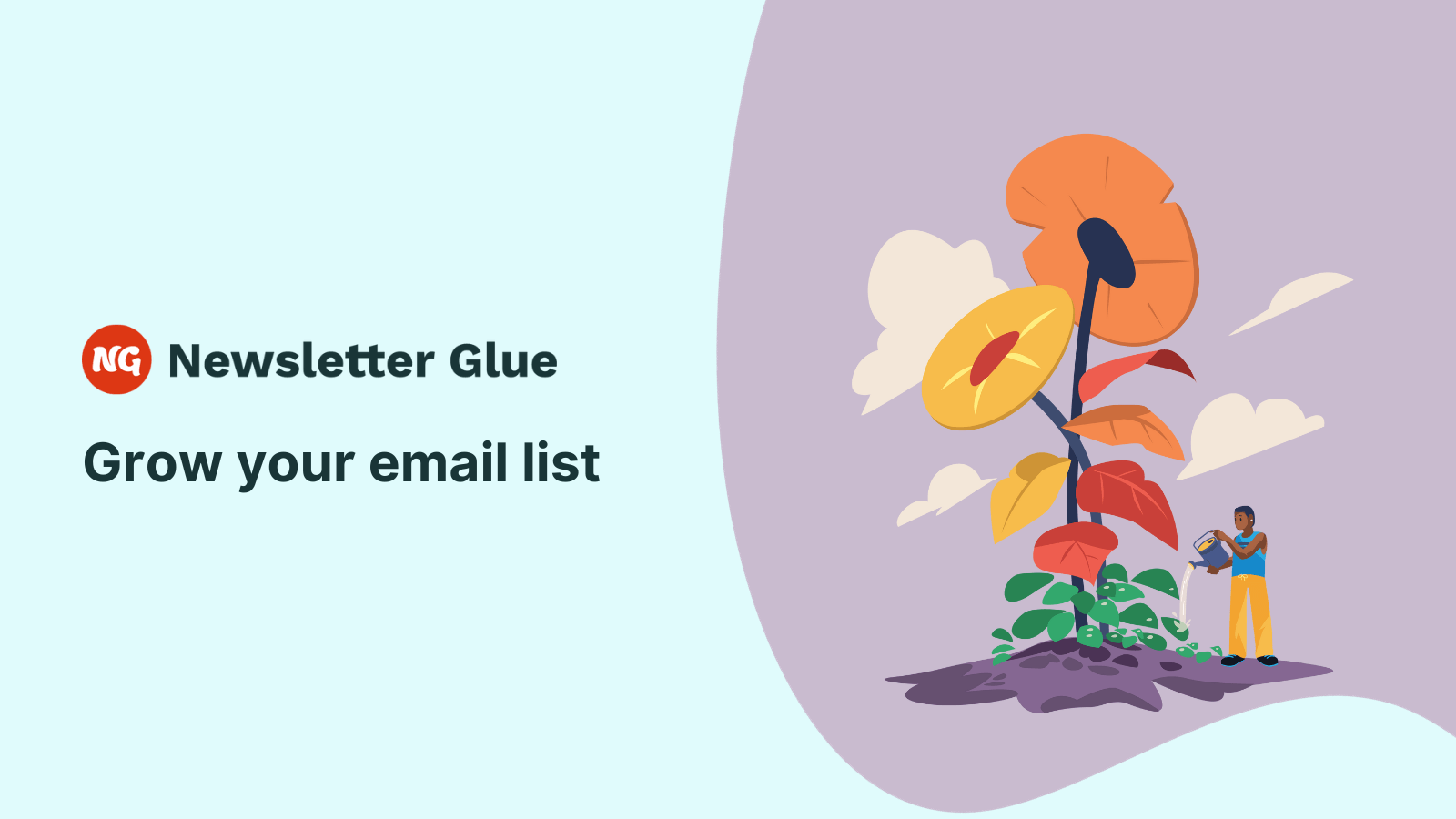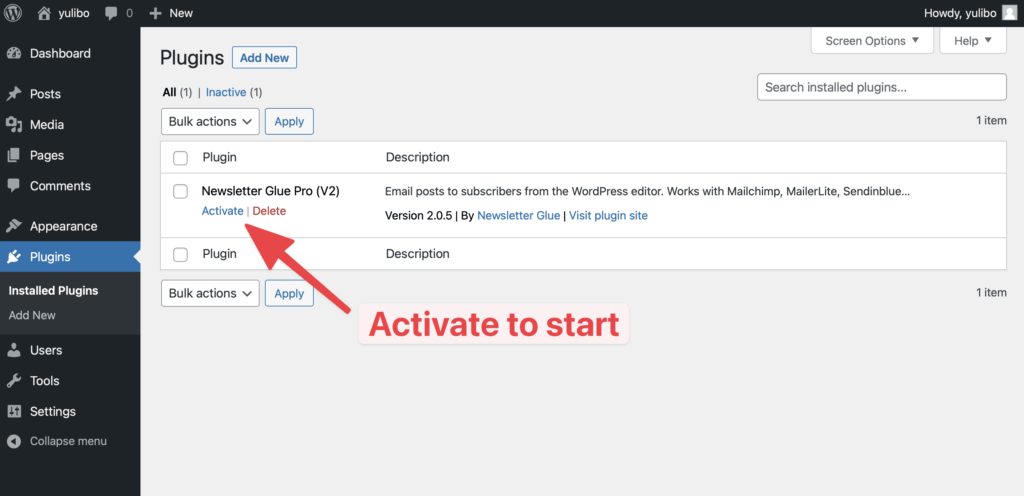Are you struggling to build a loyal audience for your newsletter?
Having an email list is essential for reaching and engaging your audience outside of social media platforms and search engines.
In this article, we’ll break down actionable tactics for growing your email list based on your current subscriber count. No matter if you have 100 or 100,000 subscribers, you’ll find actionable tips to help you grow your email list.
What is an email list?
An email list is simply a list of email addresses to which you can send emails.
Users who sign up for your email list give you their email addresses and agree to receive newsletters, content updates, and promotional emails from your company.
What are some foundational principles of growing your email list?
Before we get into the specifics of growing an email list, it’s important to approach it with the right mindset. According to Dan Oshinsky, an expert in building loyal audiences via email, “Not everyone needs to grow fast.”
Initially, it’s important to consider if fast growth aligns with your goals and business model. Dan explains, “If you’re monetizing through ads or affiliates, you probably have to grow a little bit faster. But if you’re monetizing through subscriptions, you might want to consider growing slowly.”
Now that you have a clear understanding of what an email list is and the mindset required to grow it effectively, let’s look at actionable tactics that are applicable to different stages of your email list growth journey.
13 proven tactics to grow your email list (For every stage)
There are many strategies and techniques you can use to attract more subscribers and expand your audience. Below, we’ll look at some of the proven tactics shared by email marketing expert Dan Oshinsky on the Sticky.fm podcast.
Let’s get started!
1. Have a dedicated landing page for your newsletter
A newsletter landing page is a must-have for anyone looking to grow their email list. It tells potential subscribers what your newsletter is about and why they should sign up.
Many popular email platforms like MailerLite, Mailchimp, Beehiiv, and Substack offer built-in landing page features. If your platform doesn’t have this feature, you can easily create a landing page using services like Carrd.
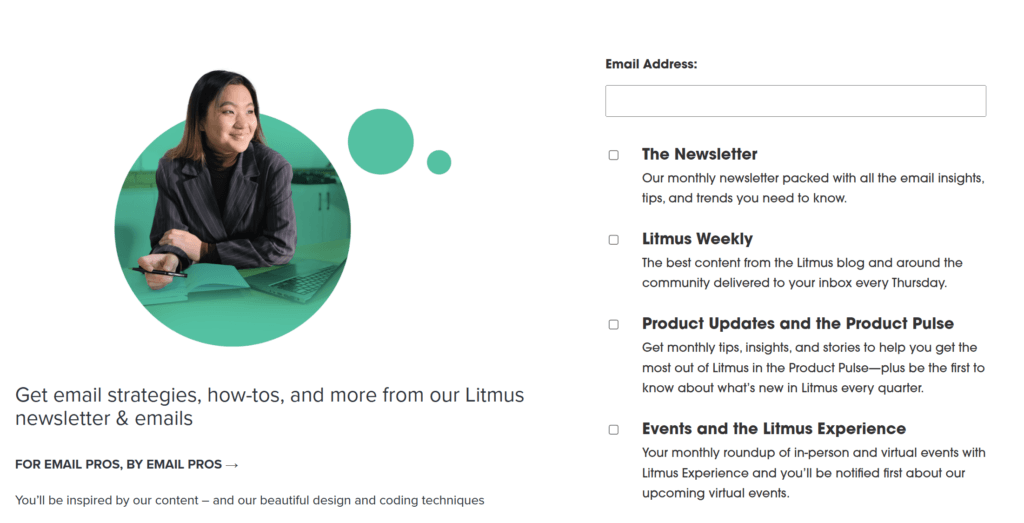
It is recommended that your landing page should answer these three questions. They are:
- What’s your newsletter about?
- Why should someone subscribe and what value they’ll gain from joining?
- How often do you send your newsletter?
Other than the above details, Dan suggests showcasing a sample of your newsletter. For this, instead of providing a link, you should add a screenshot to give visitors a glimpse of what they’ll receive without leaving the page.
2. Figure out the “why” in the newsletter sign-up box
A newsletter sign-up box is an important element that encourages visitors to join your email list. Many publishers, however, make the mistake of using generic language in their sign-up boxes. They simply say “Sign up for our newsletter” without explaining why someone should do so.
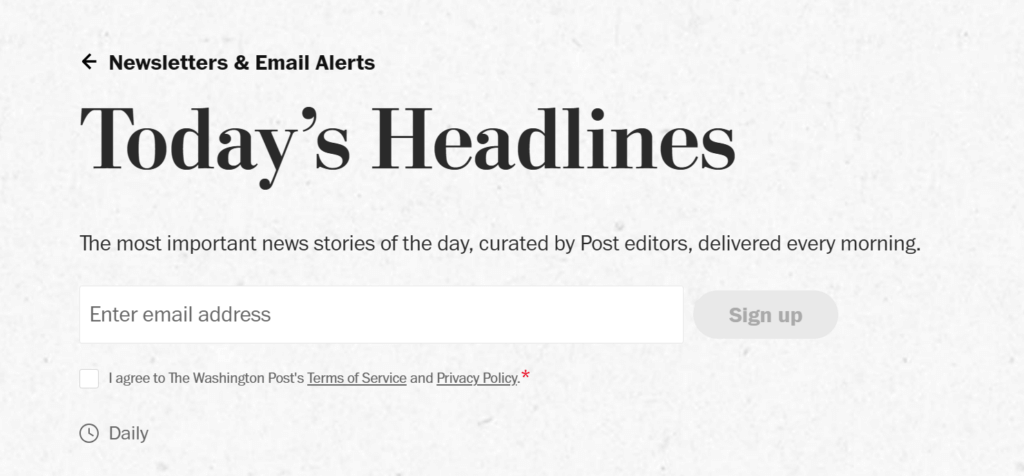
This is a missed opportunity to communicate the value of your newsletter and compel visitors to subscribe. Instead, you should say something like:
- “Get the latest news and analysis on the topics that matter to you. Sign up for our newsletter today.”
- “Join our community. Sign up for our newsletter and gain exclusive access to content, events, and offers.”
The added information can help increase the chances of converting your visitors into subscribers.
3. Use Calls to action (CTAs) in different places on the website
One of the easiest ways to grow your email list is to make your sign-up forms visible on every page of your website.
You can do this by adding a CTA or signup form in strategic locations, such as your header, footer, and sidebar.
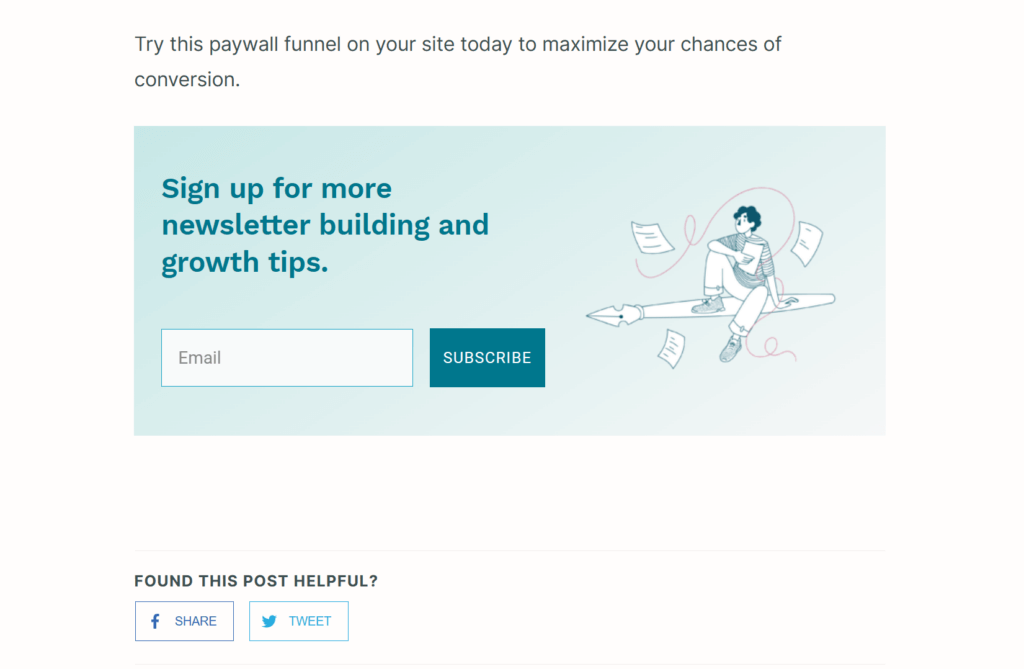
According to Dan, “The footer is the most effective location as the conversion rate on those footer units is really high.” This is because people who make it to the footer are the ones who are most engaged with your content. If they’ve enjoyed your content and scrolled to the bottom, they’re more likely to convert and subscribe to your newsletter.
Another key location is the sidebar. You can add the form to the sidebar and make it sticky so that readers can see it as they scroll through your posts.
4. Use Pop-ups to capture the attention
Pop-ups are another great option for converting website visitors into newsletter subscribers. They’re particularly helpful when you have very long articles and readers may not scroll down to the bottom or see your sign-up forms in other places.
However, some people find them annoying, so you need to be careful about when and how you display the popups. Ideally, you want to time the popup when people are most likely to be engaged and interested in your content.
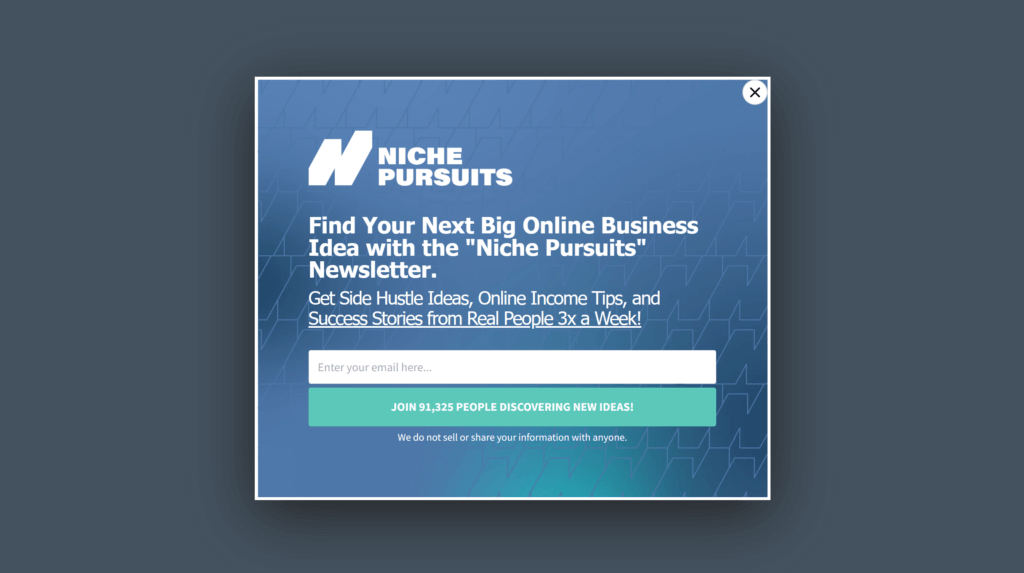
To determine the best timing and placement of your pop-ups, test them at 25%, 50%, and 75% scroll. You can also use tools like Google Analytics, Clarity, or Hotjar to track how long visitors stay on your pages and how far they scroll.
5. Create lead magnets like free courses or downloads
Lead magnets provide exclusive content in exchange for an email address. It could be anything from a free course, a downloadable PDF, a guide, a resource, or even a checklist. The key thing here is that it should address a problem your readers are already aware of and are looking for a solution. This helps you establish your authority and credibility as an expert in your field.
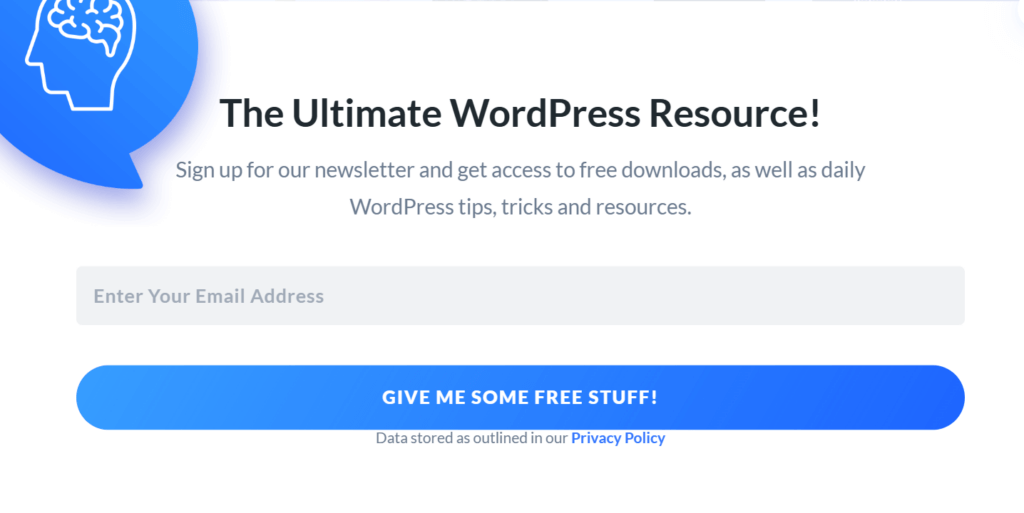
According to Dan, lead magnets work well for all stages of email list growth. The sooner you create a lead magnet, the better the chances to grow your email list.
6. Quiz and surveys that offer newsletter sign-up at the end
Surveys can be a highly effective but underrated tactic for growing your email list. You can run surveys on channels where you already have the audience and offer checkboxes at the end to make it easy for subscribers to opt-in to receive your newsletter.
If you run multiple newsletters, surveys also present an opportunity to promote your other newsletters.
This tactic has proven to be effective for Dan in driving sign-ups because those who fill out the survey are already engaged and you give them additional ways to seek information.
7. Contests and giveaways
Contests and giveaways can be effective in capturing your audience’s attention, but you must be strategic in how you use them. You need to be cautious not to offer too attractive prizes, as this may lead to too many “unqualified leads” who are only interested in the reward. Instead, you can partner with relevant brands to offer prizes that specifically appeal to your target audience.
For example, if you’re a photographer, you may want to consider partnering with photography gear and print brands to offer relevant giveaways.
According to Dan Oshinsky, the conversion rate for bigger giveaways with attractive prizes is typically around 10%. Smaller and targeted giveaways, on the other hand, can achieve conversion rates of up to 40% or even 50%.
8. Add referral programs and ask subscribers to share your newsletter
Referral programs can encourage your subscribers to share your newsletter with others, helping you in driving growth. If done correctly, it can bring a significant number of new subscribers to your newsletter.
The key here is to offer relevant rewards in exchange for referrals. This could be an entrance into the giveaway contest, a digital download, access to premium content, or any other creative incentive.
9. Cross-promotions with other newsletters and influencers
Collaboration with other newsletters to cross-promote is a great way to tap into an engaged audience that is likely to also find value in your newsletter. Platforms such as Behive and Substack have the recommendation feature built-in. This allows newsletter writers to show relevant newsletters to each other’s audiences. But what if you use some other platform? Well, you can use tools like Sparkloop and Upscribe to add recommendations to your newsletter.
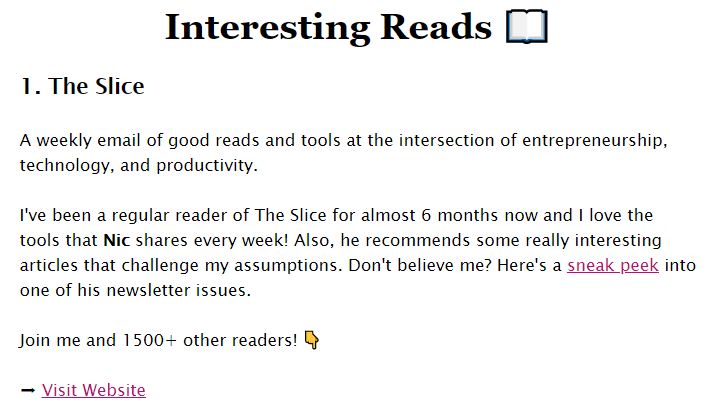
Another way to implement this tactic is to personally reach out to other newsletter writers with similar audiences and sizes and form a partnership to cross-promote each other’s newsletter. You can use UTM tags here to track the clicks and conversions from cross-promotion.
10. Guest posts and podcast interviews
Once you’ve built an audience and established expertise on a topic, earned media becomes an important growth channel. This includes getting on podcast interviews, writing guest posts on other blogs, or speaking at events.
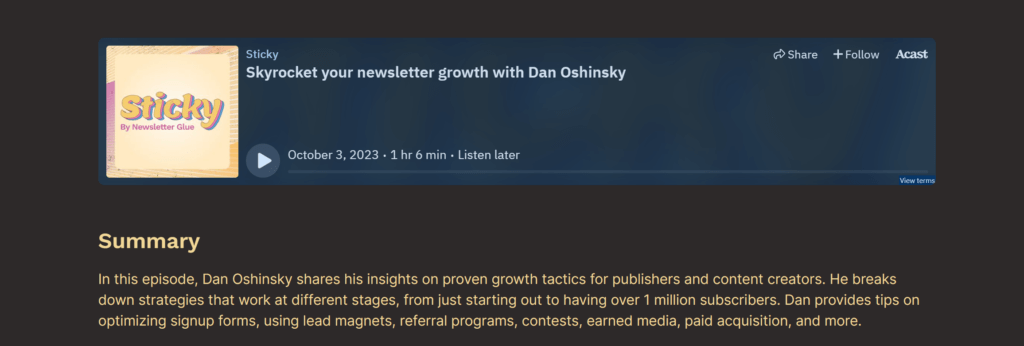
This helps you expand your audience by tapping into a wider audience from already established media outlets and influencers in your space. Their audience is exposed to you and your content, and a percentage of them will convert into your subscribers based on whether they find your content valuable.
11. Paid ads on platforms like Facebook and Google
When you start earning money from your newsletter and can invest a portion of it, paid ads can help fuel your growth further. Platforms like Facebook and Google allow you to run direct lead-generation ads targeting your ideal audience.
What this means is that instead of sending users to your landing page, users can click on the ad, and their connected email address is automatically added to your list.
12. Add OAuth sign-up process
Once your list grows, optimizing and simplifying the signup process becomes important. You can do this by implementing registration via OAuth providers like Facebook, Google, and Apple. What this does is it allows readers to subscribe to your newsletter using their existing social media or platform accounts, rather than needing to manually input their email.
When readers can subscribe with just a click, it reduces friction and helps you grow your email list.
Just be aware that some readers may not feel comfortable connecting these accounts. Keep the traditional email signup and offer OAuth to those who want a quicker, lower-effort option.
13. Acquiring other engaged newsletter lists
Once you become a large newsletter, you can consider acquiring and incorporating smaller but already successful newsletters into your ecosystem. Reach out to the publisher and propose bringing their newsletter under your umbrella. If they agree, announce the acquisition to both audiences.
Explain the benefits and what will stay the same in the newsletter they love. Then gradually transition it into your ecosystem. This gives you an audience to cross-promote your other offerings and it provides existing readers with fresh, relevant content from your brand.
You have to be careful here not to buy an email list from a random person or third party as it can cause more harm than good to your newsletter.
That’s all! These are some of the proven tactics that can help you grow your email list at any stage of your newsletter journey.
Conclusion: Grow your email list with proven tactics
Growing your email list is not a one-time effort. You need to constantly experiment with different strategies to find what works best for your audience and your goals. And as your list grows, the tactics you employ will need to evolve as well.
We’ve discussed some of the proven tactics shared by Dan Oshinsky throughout this article. Try implementing the strategies based on your current size to grow your email list even further.

